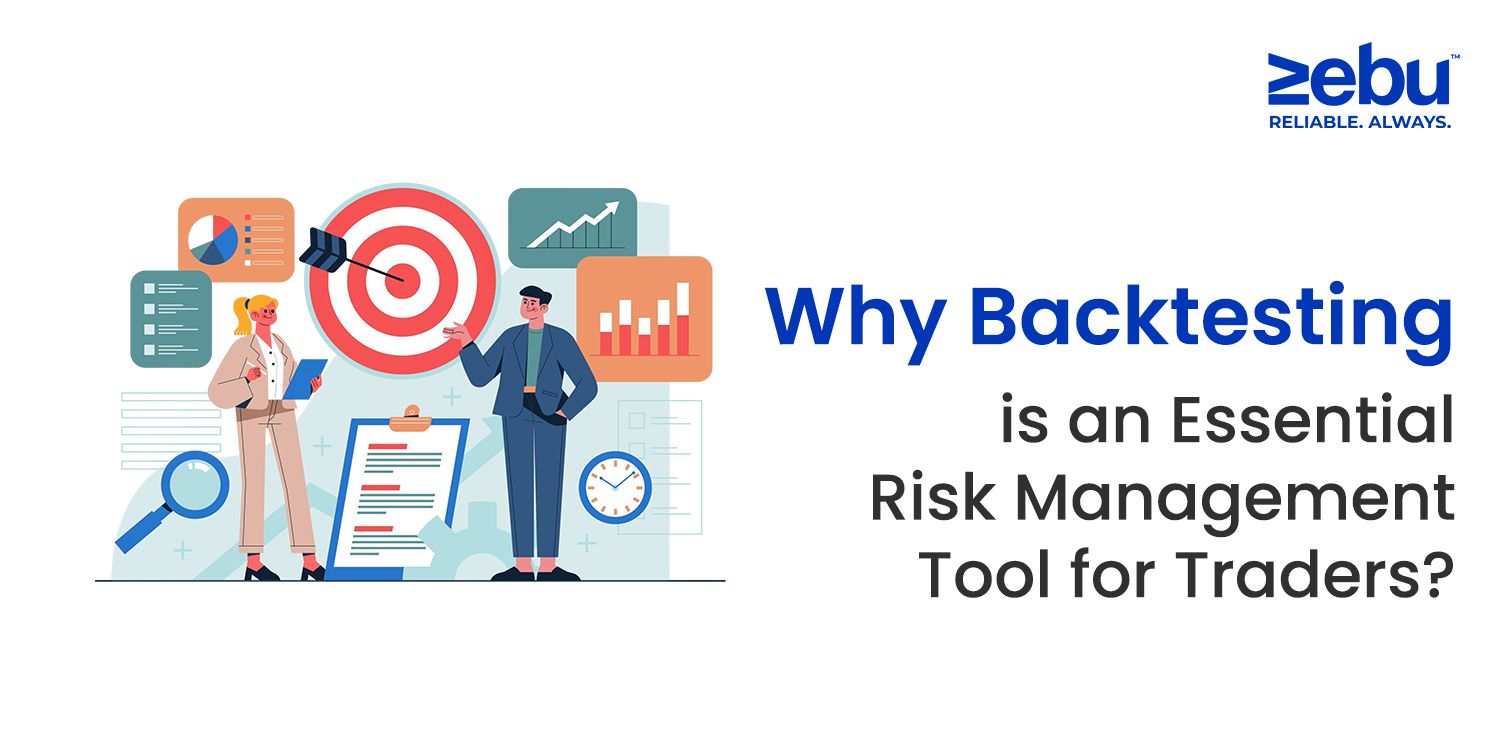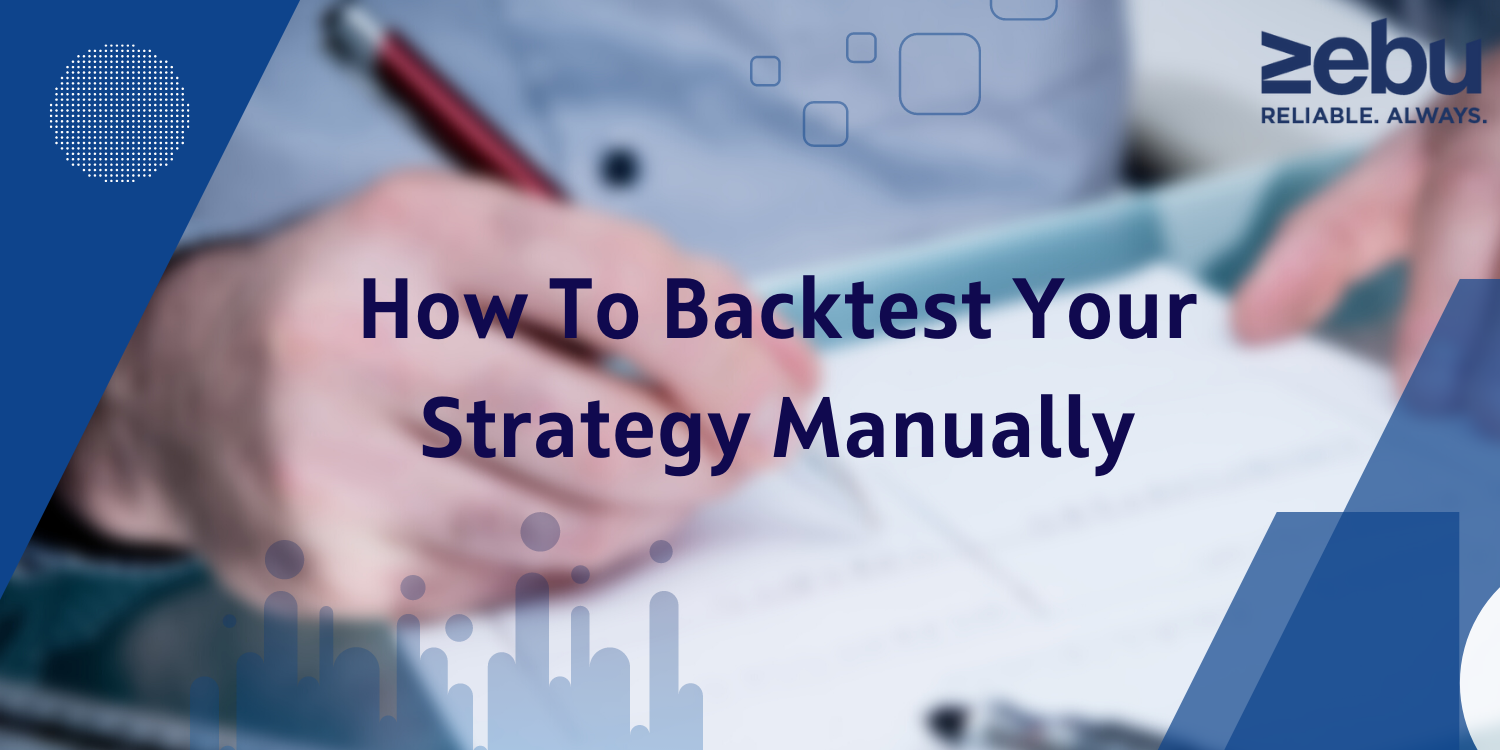
Why Backtesting is an Essential Risk Management Tool for Traders
When people start trading, they usually focus on the exciting stuff—finding the right entry point, reading charts, chasing big moves. But often, they skip over one thing that could make a major difference in the long run: backtesting.
At Zebu, we work with thousands of traders across India. We’ve seen one thing repeatedly—traders who spend time understanding how their strategy worked in the past tend to make more stable, less emotional decisions. They may not win every time, but they usually know what they’re doing—and why.
Let’s talk about backtesting in simple terms. What it is, why it matters, and how you can use it to reduce uncertainty in your trades.
What Is Backtesting?
Backtesting means checking how your trading strategy would have performed if you had used it during previous market conditions. That’s it.
It’s not about predicting the future. It’s about learning from the past. You take the same rules—your setup, your stop loss, your profit target—and apply them to historical price data. Then you review the results.
If you’re using Zebu’s MYNT online trading app, you already have access to charts and tools that can help you do this. You don’t need to code or use complex software. You can literally scroll through old charts and mark where your strategy would have triggered a trade.
Why Should Traders Care?
Here’s the honest truth: most traders lose not because they pick the wrong stock, but because they don’t have a clear plan. Or they change their plan too often.
Backtesting forces you to stick to one idea and see how it performs. It helps you answer a few basic but important questions:
- Does this strategy work more often than it fails?
- How much do I gain on average? How much do I lose when it doesn’t work?
- Are there days or times when it works better?
- What happens during news events or sideways markets?
Instead of guessing, you now have a simple record of how the strategy behaves. That’s real clarity.
A Common Mistake Traders Make
Many traders hear about a strategy online and try it the next day. For example, let’s say someone uses a breakout setup for intraday options. They buy as soon as the price moves above the high of the first 15-minute candle.
Sometimes it works. Sometimes it fails badly. Without backtesting it across 30–40 days of data, they have no idea when it’s likely to succeed—or when it’s just noise.
This is where backtesting saves you. Maybe you’ll learn that the strategy works best on Tuesdays and Wednesdays, or only when the overall index is trending. That kind of learning doesn’t come from watching five trades. It comes from reviewing many.
Real-Life Simplicity: You Don’t Need to Be a Pro
Backtesting doesn’t have to be technical. If you’re using Zebu’s platform, here’s how you can keep it simple:
- Pick one strategy you use or want to try.
- Open past charts using the TradingView feature in MYNT.
- Scroll through one month of data.
- Mark where the setup would have happened.
- Note how the trade would have ended: profit or loss.
- Track patterns: Does it do better on trending days? What about high-volume stocks?
Just do this for one hour per week. That’s it. You’ll start seeing patterns that are specific to how you trade—not someone else on social media.
How It Helps You Manage Risk
Now let’s connect this to risk management.
When you backtest a strategy, you can estimate:
- Your win rate: How many trades succeed vs fail.
- Risk/reward: How much you usually make when right vs what you lose when wrong.
- Maximum drawdown: What’s the worst stretch the strategy goes through?
Armed with this info, you’ll know:
- How much to risk on each trade
- Whether to stop trading a strategy after a certain number of losses
- How to adjust during different market phases
It’s not about perfection. It’s about having a clear frame of reference before you place your next order.
How Zebu Traders Use Backtesting in Real Life
We’ve seen clients who trade Nifty options using a simple 2-indicator system—one for entry and one for exit. When they first came to Zebu, they’d enter trades based on a “gut feeling.”
After a few losses, we encouraged them to test their strategy using past 60-minute candles over the previous month. They started noticing that their entry worked better after 10:30 a.m., not before. They also learned to skip expiry days.
Small tweaks like these, discovered through backtesting, made their overall trading smoother. They didn’t need a new strategy. They just needed more clarity about how their existing one actually behaved.
It’s About Confidence, Not Control
No one can control the market. But you can control your process.
When you’ve tested a strategy, you’re not relying on luck. You’re trading with information you’ve already seen play out dozens of times. That confidence makes a big difference—especially during volatile weeks or choppy sessions.
Zebu supports this approach through its platform tools, regional guidance teams, and relationship managers who can walk you through data if needed. We believe in clarity, simplicity, and confidence through process.
Final Thoughts
Backtesting isn’t fancy. It doesn’t guarantee results. But it gives you something that every trader needs: a better understanding of how your strategy behaves—before you risk money on it.
If you’re using an online stock broker, trading through a stock market platform, or trying setups on your e trade platform, take some time to look back before you jump in.
That small habit might be the edge you’ve been missing.
Disclaimer:
This blog is intended purely for educational and informational purposes. It does not provide investment advice, recommendations, or trading guidance. Readers are encouraged to evaluate their risk profile and consult a certified financial advisor before making any investment or trading decisions. All trading involves risk, and past performance does not guarantee future outcomes.
FAQs
- Why is backtesting important in trading?
Backtesting helps traders see how a strategy would have performed in the past, giving confidence before risking real money.
- What is backtesting in risk management?
It’s a process of testing your trading rules on historical data to identify potential risks and refine strategies for safer execution.
- Do professional traders backtest?
Yes, most professional traders backtest trading strategies to validate ideas and reduce risk before applying them live.
- How many times should I backtest my strategy?
Backtest multiple times across different market conditions to ensure the strategy works reliably and isn’t overfitted.
- Is backtesting difficult?
Not really. With the right tools, backtesting in trading is straightforward, though it requires patience and accurate data for meaningful results.
